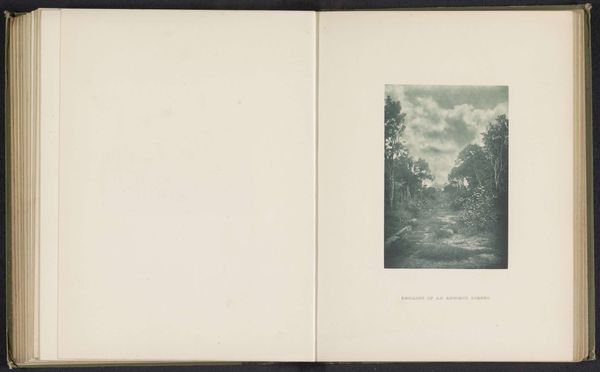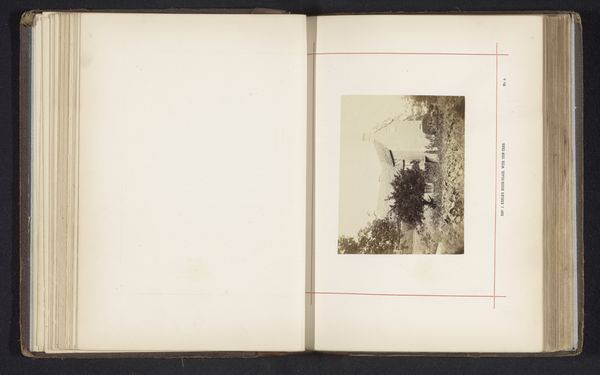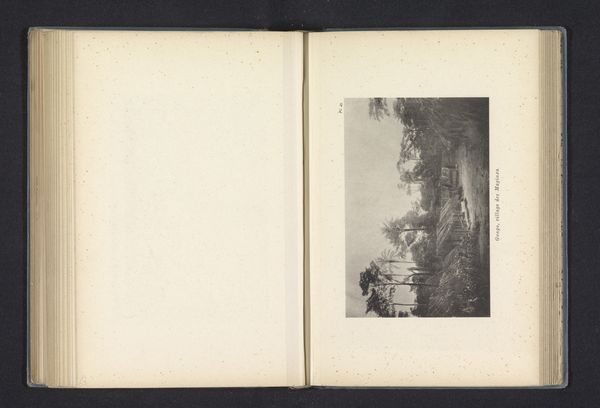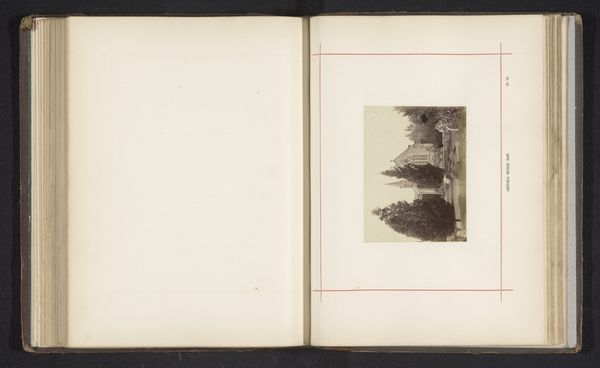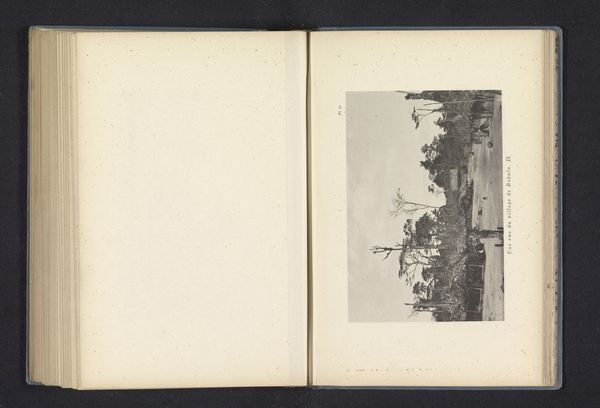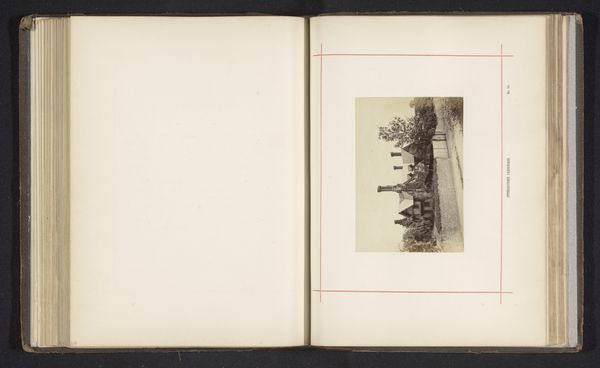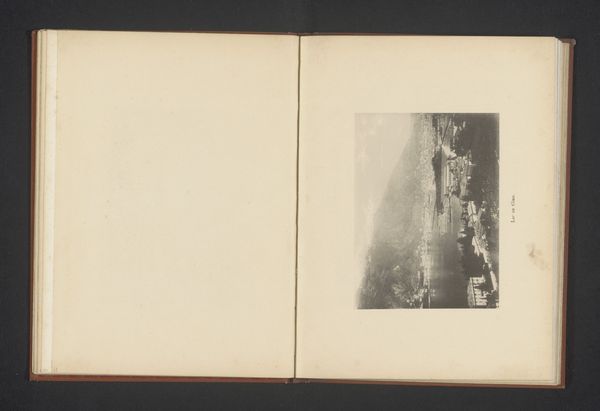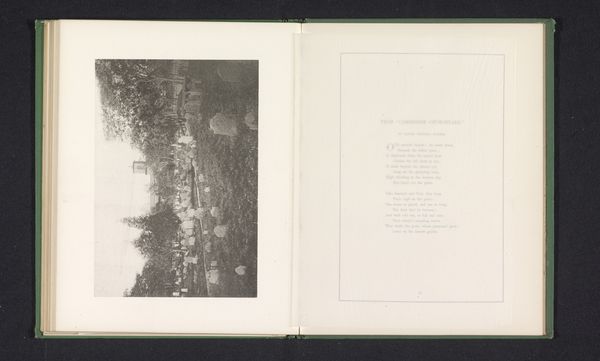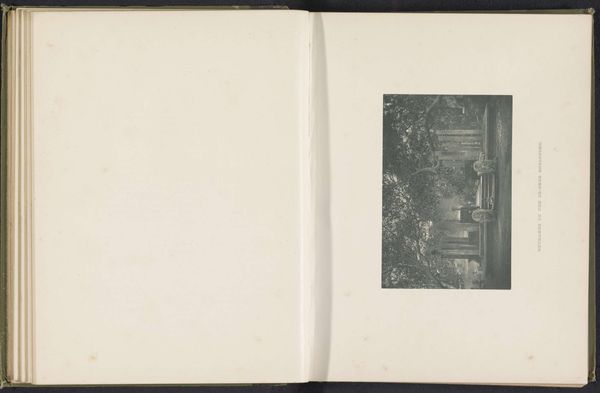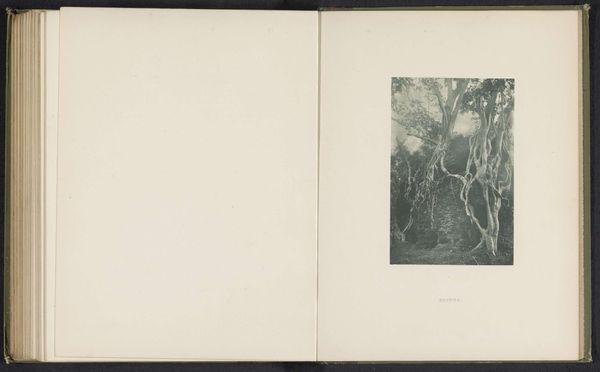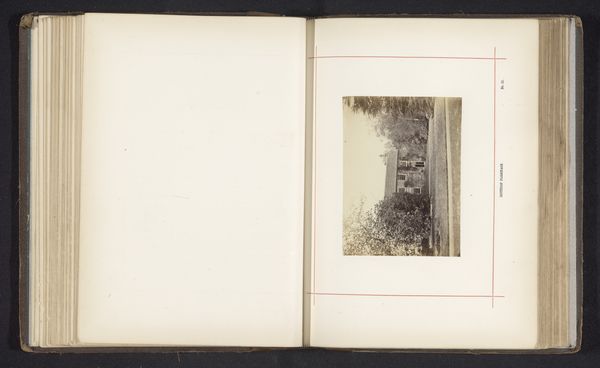
print, photography, site-specific, gelatin-silver-print, albumen-print
# print
#
landscape
#
photography
#
site-specific
#
gelatin-silver-print
#
albumen-print
Dimensions: height 156 mm, width 110 mm
Copyright: Rijks Museum: Open Domain
Editor: This photograph, "Aluwihari" by Henry William Cave, was taken around 1896 and printed using the albumen silver process. The composition is quite striking. The monumental scale of the architecture relative to the human figure evokes a sense of power. What strikes you most about this image? Curator: I see a visual document deeply embedded within the colonial gaze. Cave, a British photographer, captured this site, and we must question his intent. Was it simply documentation, or was it a performance of power? Consider the relationship between the photographer, the subject, and the viewer – a relationship inevitably shaped by the power dynamics of colonialism. Editor: That's a perspective I hadn’t considered. The architecture itself appears traditionally Sri Lankan, could that aspect defy or complicate those power dynamics you mentioned? Curator: It could. The photograph may become a tool for resisting colonial narratives by documenting and celebrating indigenous architecture and culture. It invites questions of authenticity, representation, and the photographer's role in shaping the narrative. Were local voices and perspectives included or centered? It's also crucial to understand this image within the larger context of visual colonialism – the ways in which photography was used to construct and reinforce colonial ideologies. Editor: So it’s not a simple image; it embodies this tension between documentation and colonial representation. Curator: Exactly. By engaging with these critical perspectives, we can unravel the complexities and challenge dominant narratives associated with seemingly straightforward historical images. Considering the context surrounding photographic acts forces us to ask ourselves whether they served or challenged colonialism. Editor: That's truly insightful. I'll definitely look at historical photographs with a more critical eye now, and remember to think of who gets to control the story and how that shapes what is visible. Curator: Remember to continuously ask yourself these kinds of critical questions when encountering images. Doing so enriches our understanding of the art and of the societies in which that art emerged.
Comments
No comments
Be the first to comment and join the conversation on the ultimate creative platform.
